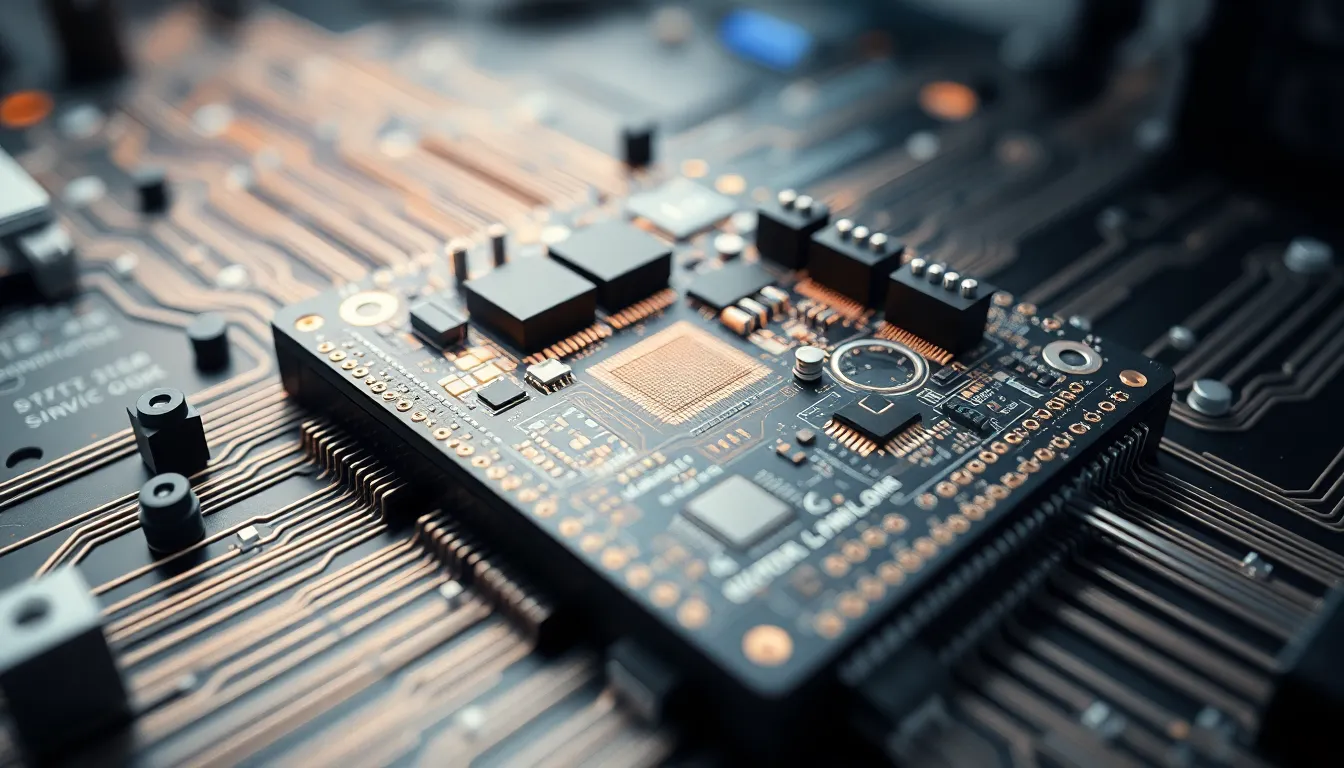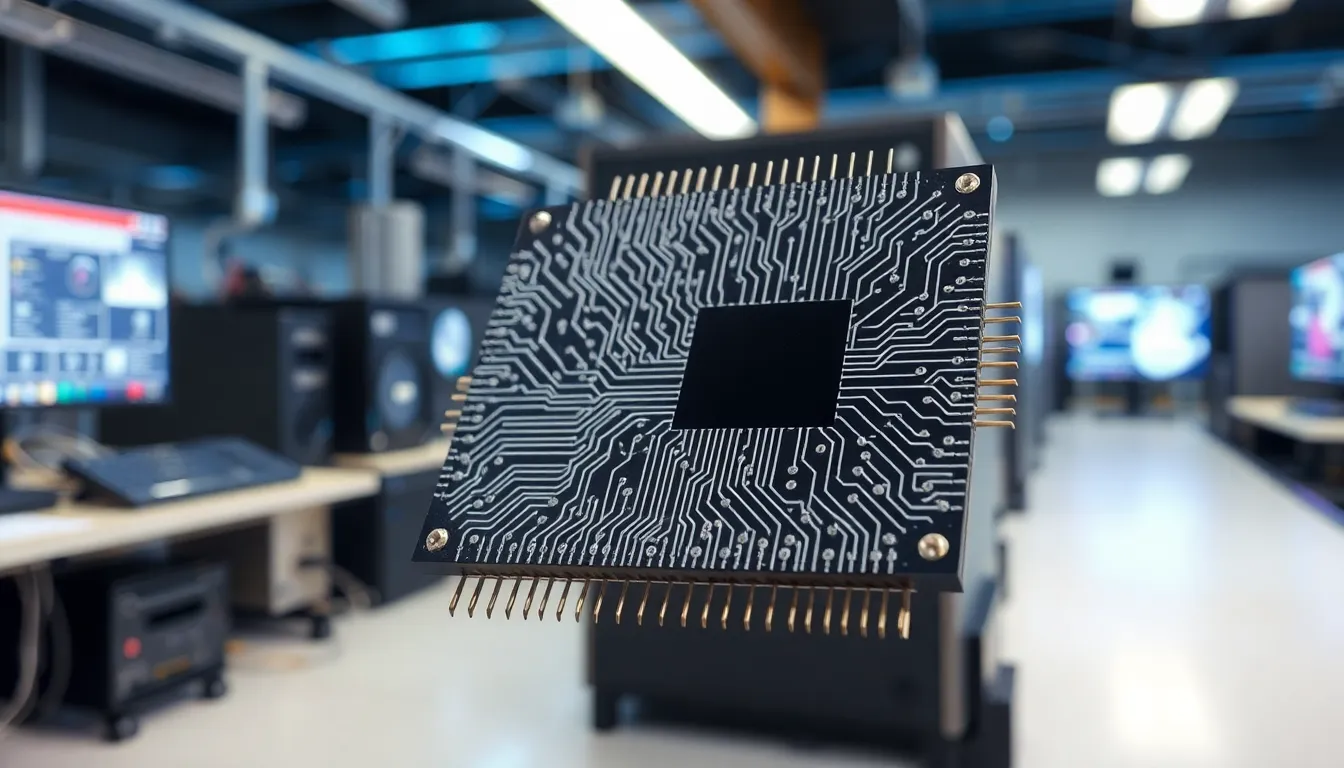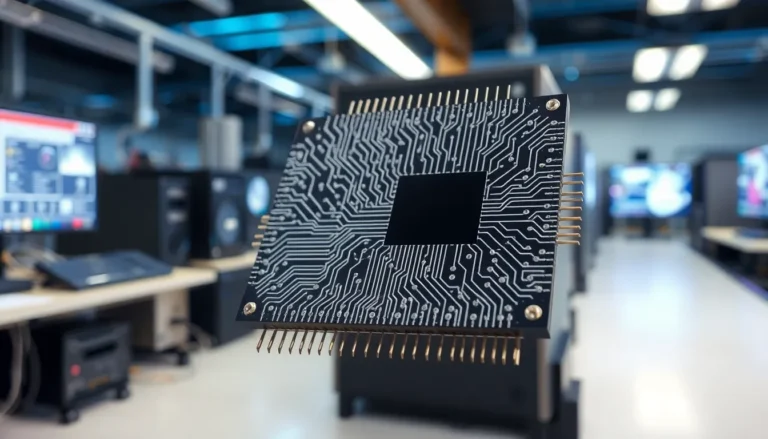Imagine a world where computers think and learn like humans—sounds like science fiction, right? Enter neuromorphic computing, the tech that’s here to bridge the gap between man and machine. By mimicking the brain’s architecture, this revolutionary approach promises to transform the way we process information, making computers faster and more efficient than ever before.
Table of Contents
ToggleOverview of Neuromorphic Computing
Neuromorphic computing emulates the brain’s architecture, aiming to improve computer processing capabilities. This advanced approach enhances the speed and efficiency of information processing, moving towards machines that can think and learn like humans.
Definition and Purpose
Neuromorphic computing refers to the design of systems that imitate neural structures and processes of biological brains. Its primary purpose is to create faster and more efficient computational models that handle tasks like perception, decision-making, and learning. Traditional computing relies on sequential processing, while neuromorphic systems operate in parallel. This enables them to tackle complex problems more effectively, offering potential applications in artificial intelligence and robotics.
Key Characteristics
Key characteristics of neuromorphic computing include energy efficiency, adaptability, and real-time processing. Energy efficiency defines how these systems consume significantly less power compared to traditional computers. Adaptability reflects their ability to learn from data dynamically, adjusting to new information without extensive reprogramming. Real-time processing allows for immediate responses to stimuli, mimicking the brain’s quick reactions. Collectively, these traits position neuromorphic computing as a transformative technology in various fields, from machine learning to sensory processing.
Historical Context


Neuromorphic computing has a rich history of developments and research that shaped its evolution. Understanding these milestones provides valuable insights into its current applications and future potential.
Early Developments
In the 1980s, interest in mimicking the brain’s architecture gained momentum. Researchers began exploring artificial neural networks, laying the foundation for modern neuromorphic systems. Widely recognized, Carver Mead introduced the concept of neuromorphic engineering, emphasizing the need for hardware that reflects neural processes. Notably, the first analog VLSI (Very Large Scale Integration) chips emulated neurons, showcasing how brain-like architectures could be designed. Early experiments demonstrated that these chips could process information more efficiently compared to traditional digital circuits.
Influential Research
Key advancements emerged from multiple research endeavors in the 1990s and 2000s. Noteworthy, the work of Paul Merolla and his team at IBM garnered attention with the development of the TrueNorth chip, which hosts one million programmable neurons. This chip effectively enables parallel processing akin to biological systems. Additionally, multiple universities began investing resources into neuromorphic computing research, illustrating a growing academic interest. Collaborations between academia and industry started driving innovation, leading to further breakthroughs in algorithm development and hardware design.
Current Technologies in Neuromorphic Computing
Neuromorphic computing encompasses a range of cutting-edge technologies designed to replicate biological neural processes. These innovations improve the efficiency and capability of computation.
Hardware Innovations
Various hardware advancements enhance neuromorphic computing’s effectiveness. IBM’s TrueNorth chip exemplifies this progress, featuring one million programmable neurons capable of real-time processing. Another key innovation is Intel’s Loihi chip, which utilizes asynchronous event-driven architectures for energy-efficient computation. These chips mimic synaptic connections, allowing for robust neural communication. Additionally, spiking neural networks rely on voltage spikes to mimic brain activity, enhancing performance for complex tasks. These hardware innovations pave the way for new applications in artificial intelligence and robotics.
Software Frameworks
Numerous software frameworks support neuromorphic computing. NEST, for instance, simulates large spiking neural networks, providing a platform for testing ideas in a controlled environment. Other frameworks, such as BindsNET, combine traditional machine learning techniques with neuromorphic principles, facilitating simpler integration. Meanwhile, tools like Brian2 offer flexibility for users to customize neural network simulations. Each software framework accelerates research and development while promoting collaboration across the field. These resources ultimately contribute to the advancement of neuromorphic computing technologies.
Applications of Neuromorphic Computing
Neuromorphic computing exhibits vast potential across various fields, driving innovations in artificial intelligence and robotics.
In Artificial Intelligence
Artificial intelligence benefits significantly from neuromorphic computing through advanced learning capabilities. Spiking neural networks provide real-time data processing, improving response times. This enhances AI’s ability to adapt to new information rapidly. Furthermore, neuromorphic systems mimic brain functionality, allowing AI algorithms to tackle complex problems more efficiently. Applications include image recognition and natural language processing, where speed and accuracy are paramount. Companies like IBM have implemented neuromorphic chips in AI solutions to elevate performance, showcasing tangible progress in this area.
In Robotics
Robotics utilizes neuromorphic computing to enhance perception, decision-making, and responsiveness. Robots equipped with neuromorphic chips process sensory information similarly to human brains. This capability allows them to react swiftly to dynamic environments, making them more effective in real-world scenarios. Applications span from autonomous drones to companion robots, where adaptability is critical. In addition, neuromorphic architectures contribute to low-power consumption, extending operational capabilities. Integrating these systems into robotic platforms leads to notable advancements, reinforcing neuromorphic computing’s significance in advancing robotic technologies.
Future Prospects and Challenges
Neuromorphic computing shows great promise for the future while also presenting unique challenges. This evolving technology has the potential to redefine how machines process information.
Potential Advancements
Neuromorphic computing can lead to breakthroughs in artificial intelligence and robotics. Enhanced learning mechanisms could emerge through improved spiking neural networks. These advancements may allow systems to operate with greater autonomy and adaptability. Real-time processing capabilities contribute to more responsive and intelligent systems. Companies, such as IBM and Intel, continue to innovate, pushing the boundaries of neuromorphic architectures. Scaling these technologies for practical applications can result in safer and more efficient autonomous vehicles. Moreover, widespread deployment in smart cities can facilitate better resource management. Such innovations promise to transform everyday interactions with machines.
Ethical Considerations
Ethical considerations arise as neuromorphic computing progresses. Concerns about privacy and data security need addressing as systems become more integrated into daily life. Decisions made by autonomous systems could raise accountability issues, especially in critical scenarios. Bias in AI models presents another challenge, as algorithms must reflect diverse datasets. Moreover, the implications of machines mimicking human thought patterns require careful evaluation. Stakeholders must discuss the societal impact of deploying these technologies broadly. Establishing regulations that ensure ethical use is crucial for fostering public trust. Balancing innovation with ethical responsibility remains essential as neuromorphic computing advances.




